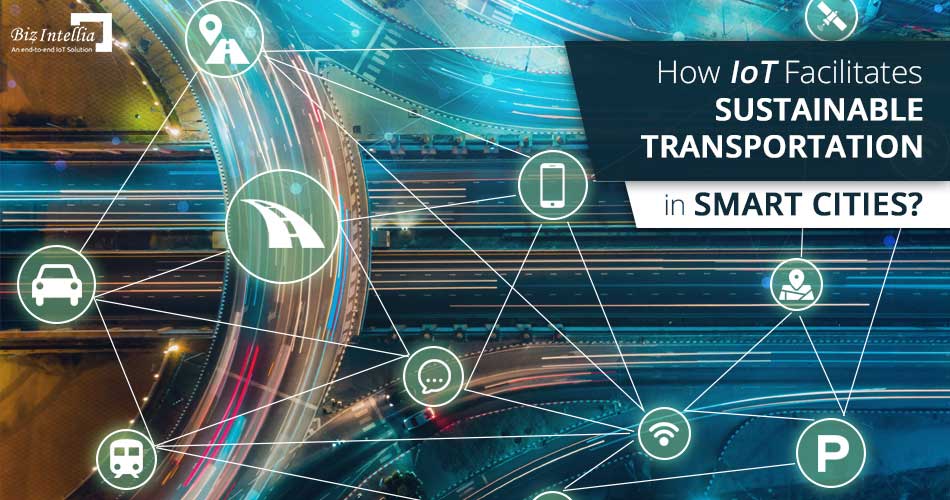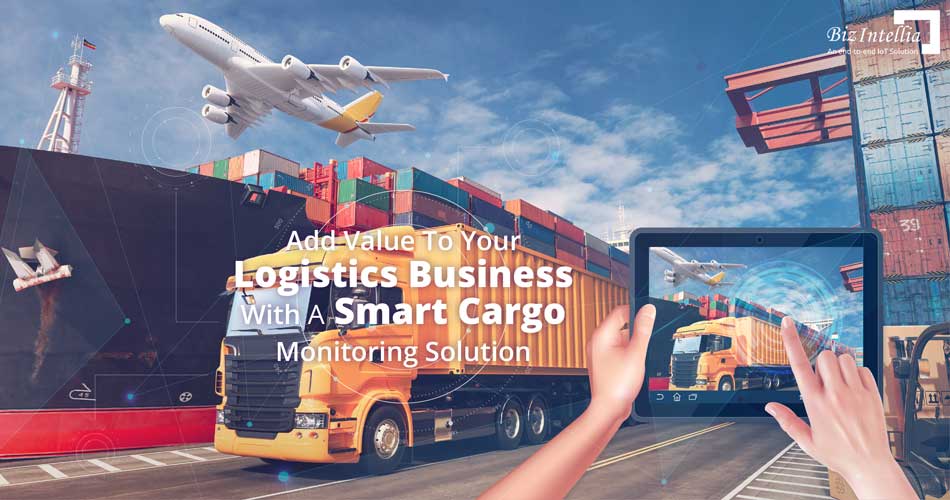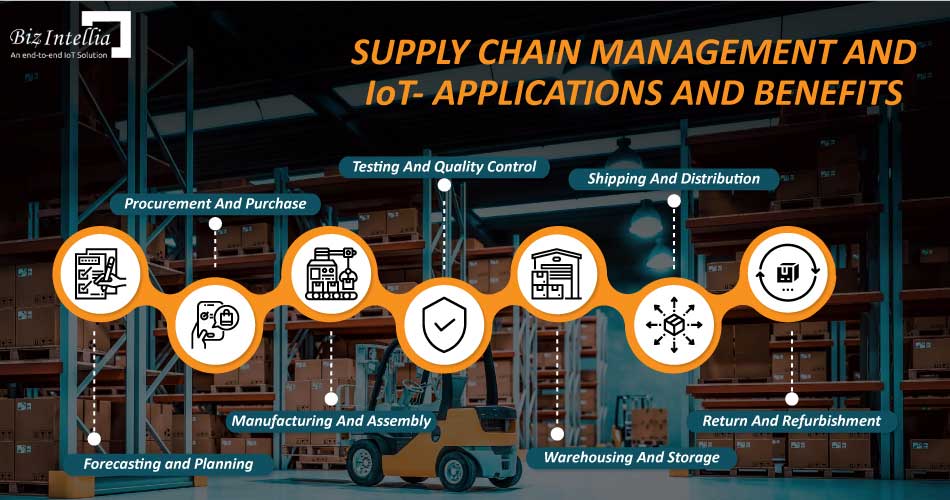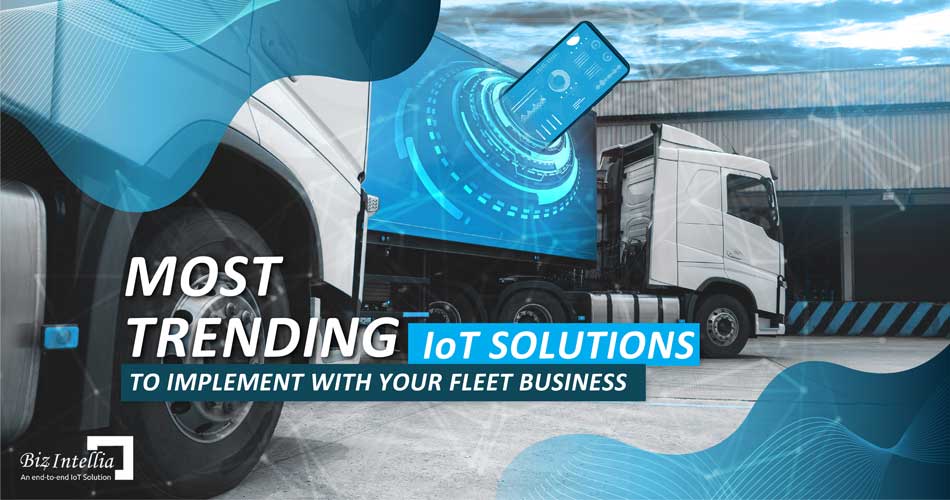Internet of Things making ripples in every possible segment has created a wide-spread market for wearables, made our homes smart, and revolutionized the operation methodologies of various industries. One such industry that has benefited immensely from the advent of IoT in the sector of transportation.
IoT referred to as a network of inter-connected devices, allows vehicles to connect and share data with each other and transportation management systems. These IoT based vehicle-to-everything (V2X) networks have enabled seamless traffic control in cities, reduced emission rates, increased fuel efficiency, and sustainable transportation.
How IoT helps in Transportation Management?
Internet of Things is a telemetry technology that uses high-end sensory devices to connect various equipment and assets over a secure network protocol. In vehicular and transportation vertical, IoT is quite eminent for the development of connected and semi-autonomous vehicles.
By connecting with cellular and non-cellular networks, these vehicles share information over a wide-spread V2X connection. This V2X network not only includes vehicles but also traffic infrastructures and pedestrians.
Information about vehicles’ speed, location, etcetera is collected via embedded sensors and compiled in a payload and transmitted to a transportation management system. This information is then processed through analytical algorithms to develop useful insights that can be used to facilitate smart transportation in smart cities.
The use of IoT technology has created intelligent and sustainable transportation facilities that offer various benefits to a city leveraging telemetry capabilities. The global connected car market had already reached USD 42 billion in 2019 and is now expected to grow at an unprecedented CAGR of 22.3% to reach a market valuation of USD 212 billion in 2027.
Let us look at some Internet of Things benefits that result in sustainable transportation:
1) Reduced Carbon Emissions:
It can be said without a doubt that vehicles are one of the biggest causes of air contamination and overall emissions. In 2017 alone, the transportation industry contributed 29% to the overall greenhouses gas emissions followed by the sector of electricity, manufacturing, and agriculture.
Even though new regulations are been imposed by governments of various nations, there is little to no change in the emanation of greenhouse gases. The technology of Internet of Things can be used by pollution control boards to monitor the amount of sulfates, nitrates, and carbon compounds released by vehicles on board. Gas sensors installed on the silencers of vehicles will allow pollution regulating authorities and traffic controllers to track the amount of pollutants released by every vehicle. Moreover, since medium to heavy-duty trucks is mainly responsible for the emission of greenhouse gases, logistics and other fleet handling companies can use this system to regulate emission rates.
This will help in reducing the overall carbon footprint and create sustainable and comfortable living in cities.
2) Increased Fuel Efficiency:
The use of IoT technology can also help in enhancing the fuel efficiency which will further reduce the consumption of fuels in vehicles. The condition-based maintenance procedures allow monitoring of performance and state of the engine and other vehicle components. Hence, users can detect the reason for the over-consumption of fuel and take preventive measures to boost fuel efficiency.
This application of IoT is especially beneficial for fleet companies. Fleet handlers can monitor the time during which the truck was idling and track the driving patterns of truckers that result in fuel wastage. Based on the information gathered from the trucks, operators can ask truckers to kill the ignition on red lights, reduce idling, and improve driving habits to save fuel.
This not only will help in reducing unwanted fuel costs but also help in saving crude and other petroleum products for our future generations.
3) Improved Public Transportation:
IoT driven transportation management systems are highly beneficial for boosting the functioning of public transportation. Let it be buses, trams, trains, or scheduled shuttles, the complexity involved due to their wide-spread network makes their management and handling quite difficult. Many factors participate in their operation and even a slight alteration of these factors can result in the disruption of their schedule.
Internet of Things can hence be used to garner the benefits of real-time details about the on-going facilities on stations and ports along with scheduling of transit vehicles. The concerned authorities and public transport handlers will hence have a clear oversight over the day to day plans and can also automate the entire field outright.
Geolocation tools and GPS can be used to have a clear information about the location, speed, fuel levels, and ETAs of each transport. Furthermore, pedestrians waiting for transit on subsequent stoppages and stations can also track the time at which the next bus or train will arrive through the help of a mobile application. They can also gain alerts about the delays and on-time schedules of the transits.
CONCLUSION:
Internet of Things is revolutionizing the sector of transportation with its advanced telematics and monitoring capabilities. All the public and personal vehicles are outfitted with sensors and other IoT devices that allow the monitoring of different parameters essential for sustainable living.
The technology reduces fuel wastage, enhances public transport systems, and regulates the release of greenhouse gases thus creating a sustainable and comfortable living in cities.




